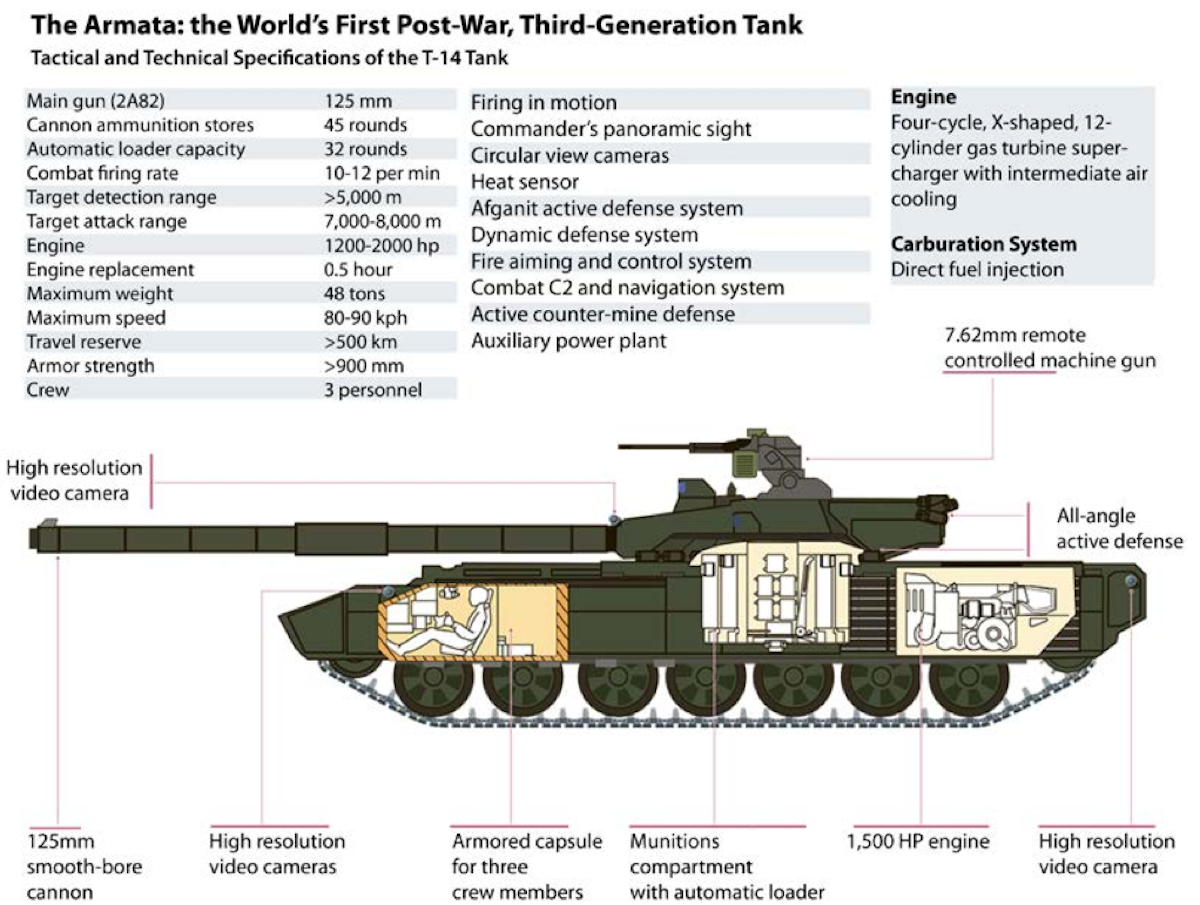The Stryker is not a tank. It's an IFV, IFV's have had remotely controlled tower mounts for a long time. We are talking about a tank, no tank in production has an unmanned turret.
The Stryker is pretty similar in basic philosophy to the T-14's automated turret but there are differences, the Stryker does not appear have a ammunition bustle, the stryker also has a 105mm canon while the T-14 has a 125mm cannon, smaller cannon are lighter, smaller and have less recoil. Turrets with larger cannons have to deal with larger auto loaders, room is a problem, larger rounds, again room is a problem. Engineering a weapons bustle separate from the carousel. Now the challenge is actually putting everything together and still having a turret that is lighter and smaller then a manned turret.
Good find, for a moment it looked like the stryker turret was actually automated and controlled from a separate compartment. This is nothing like the T-14.
I'm aware its not a tank but an light armor vehicle. But as you stated its pretty much similar in what it does as the T-14 so its nothing new to NATO or to the west as that poster mentioned as Russian only. The ammo is below the gun and little to the back, hence thanks to Barmeley's post with the schematic you see where its between the commander and the gunner.
The 105 is the same caliber as the one used on the earlier versions of the Abrams before adopting the 120. And because of this vehicle has to use the smaller gun for less recoil and its lighter. But its pretty much a remote weapons platform. Had they gotten rid of the hatches and so on, the crew won't be able to get out except to the rear or driver's hatch. But its still an LAV and smaller and not a tank.
M1128 Mobile Gun System - Wikipedia, the free encyclopedia
Firepower
The MGS' remote weapon-station has a small silhouette, is stabilized and autoloading. The remote weapon-station mounts a 105 mm M68A2 rifled cannon. The vehicle is primarily outfitted to support infantry combat operations. While it could take on some of the roles of tanks, it is not designed to engage in combat with tanks. The MGS can store 18 rounds of main gun ammunition in the turret. It has a rate of fire of six rounds per minute.[3]
The MGS' 105 mm cannon can fire four types of ammunition: the M900 kinetic energy penetrator to destroy light armored vehicles; the M456A2 high explosive anti-tank round to destroy thin-skinned vehicles and provide anti-personnel fragmentation; the M393A3 high explosive plastic round to destroy bunkers, machine gun and sniper positions, and create openings in walls for infantry to access; and M1040 canister shot for use against dismounted infantry in the open.[4][5]
The Stryker is pretty similar in basic philosophy to the T-14's automated turret but there are differences, the Stryker does not appear have a ammunition bustle, the stryker also has a 105mm canon while the T-14 has a 125mm cannon, smaller cannon are lighter, smaller and have less recoil. Turrets with larger cannons have to deal with larger auto loaders, room is a problem, larger rounds, again room is a problem. Engineering a weapons bustle separate from the carousel. Now the challenge is actually putting everything together and still having a turret that is lighter and smaller then a manned turret.
I don't think its really difficult when you can put the ammo in the rear of the autoloading gun turret similar to the Leclerc of the new Japanese Type 10. The crew would be below or in front of the hull.
Probably they would be capable , but they didn`t make anything in that direction. Only US, Russia and Germany so far showed capability with tech demonstrators..
I`m talking about MBT category.
USA , TTB based on M1 Abrams

Germany NGP-EGS (it has turret weight simulator not actual turret)

Soviet Union , project "Molot" (Hammer)

Russia , Object 195

This are known projects plus probably more existed but are classified info.
40ton Future Combat Systems tank. Prototype of course.











